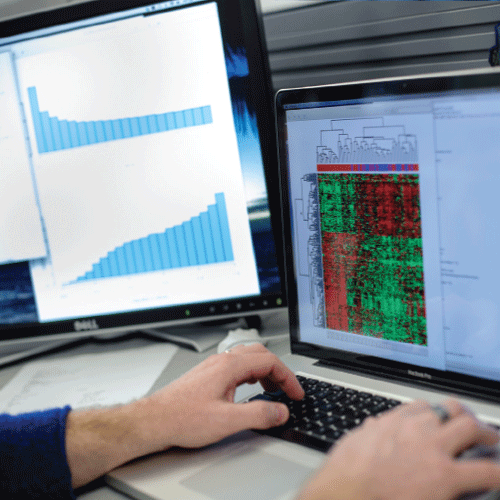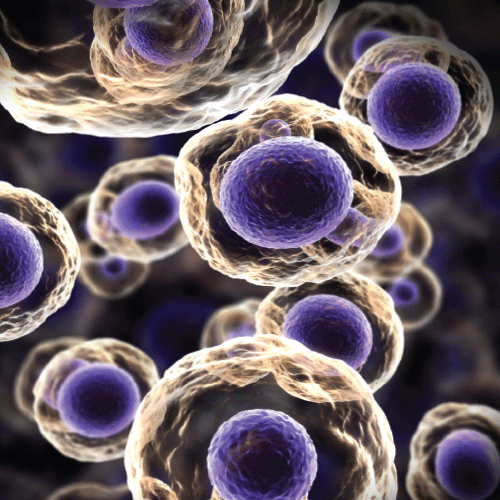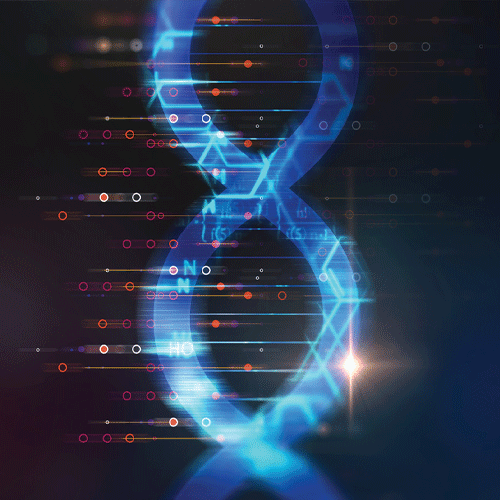Studying the Genome to Understand the Sequence
 In 2001 the completion of the Human Genome Project and the publication of the DNA sequence found inside every human cell were announced with much fanfare. Although it may have seemed like the end of an era, in reality it was only the beginning. Little was known about how cells used DNA information to function and interact. There was not a clear understanding of how genes maintain human health or predispose to disease. A representative genome had been sequenced, but how many differences in the genetic information were present from person to person? How did the sequence compare to other organisms? Sequencing the human genome raised far more questions than it answered.
In 2001 the completion of the Human Genome Project and the publication of the DNA sequence found inside every human cell were announced with much fanfare. Although it may have seemed like the end of an era, in reality it was only the beginning. Little was known about how cells used DNA information to function and interact. There was not a clear understanding of how genes maintain human health or predispose to disease. A representative genome had been sequenced, but how many differences in the genetic information were present from person to person? How did the sequence compare to other organisms? Sequencing the human genome raised far more questions than it answered.
Since that time, several large-scale projects have expanded our understanding of the human genome. The International HapMap Project identified common genetic variants and compared them across world populations. This was followed by the 1,000 Genomes Project, which sought to categorize rare genetic changes across an even larger number of global communities. Collectively, these two projects identified more than 88 million DNA changes.
ENCODE, the Encyclopedia of DNA Elements, was launched to determine the functional significance of every nucleotide in the genome. This project is working to detect and classify those sequences that stimulate or silence the transcriptional activity of all genes. Data published in 2012 suggest that as much as 80% of the genome is involved in some sort of “biochemical function.” This includes those regions of the DNA that are bound by proteins necessary to regulate transcription or DNA folding, but also includes DNA sequences that correspond to evolutionarily ancient mechanisms not used by human cells. Additional analyses suggest that 8-20% of the genome is functionally important for human life.


